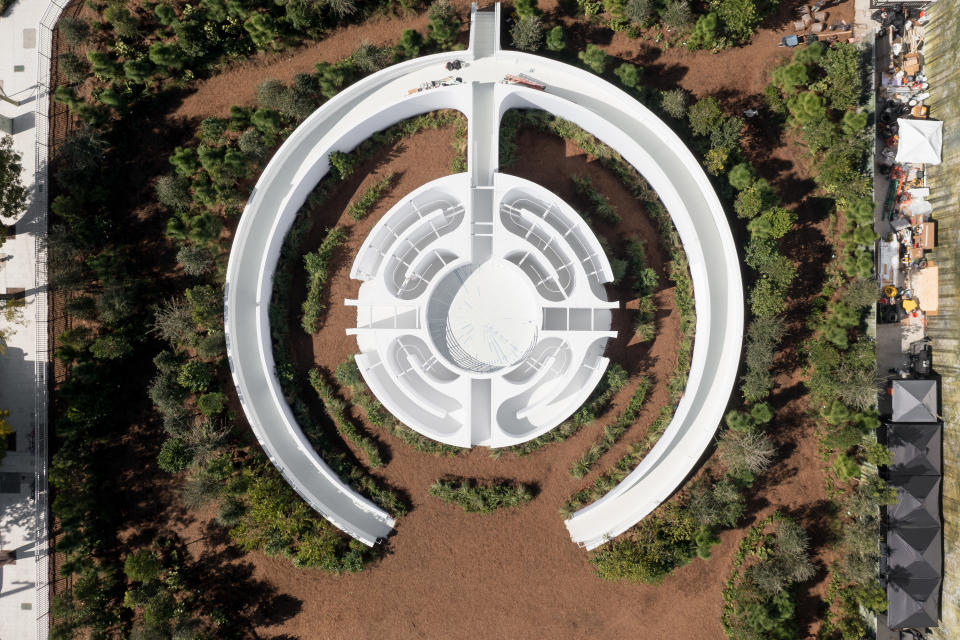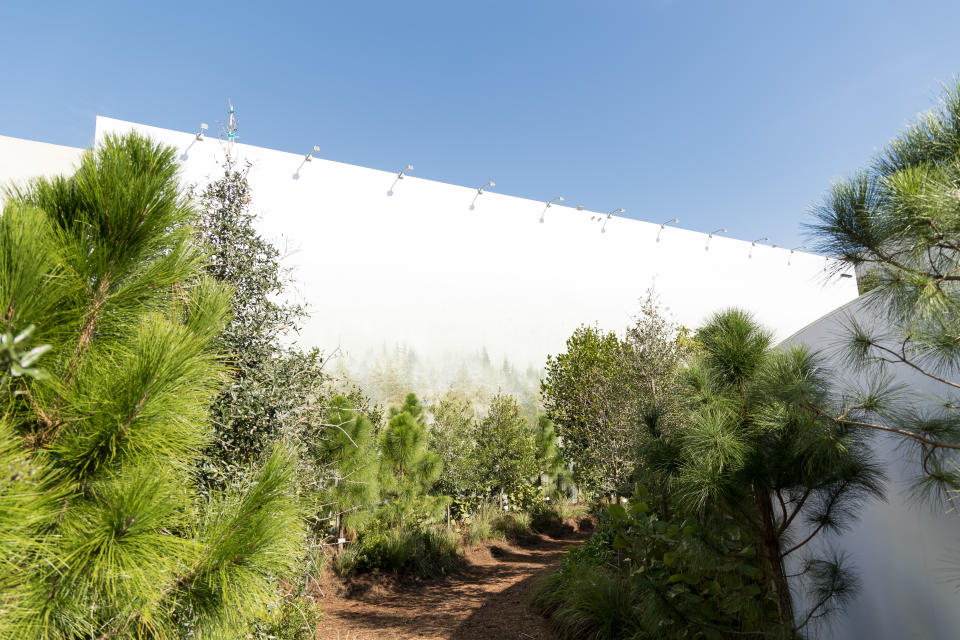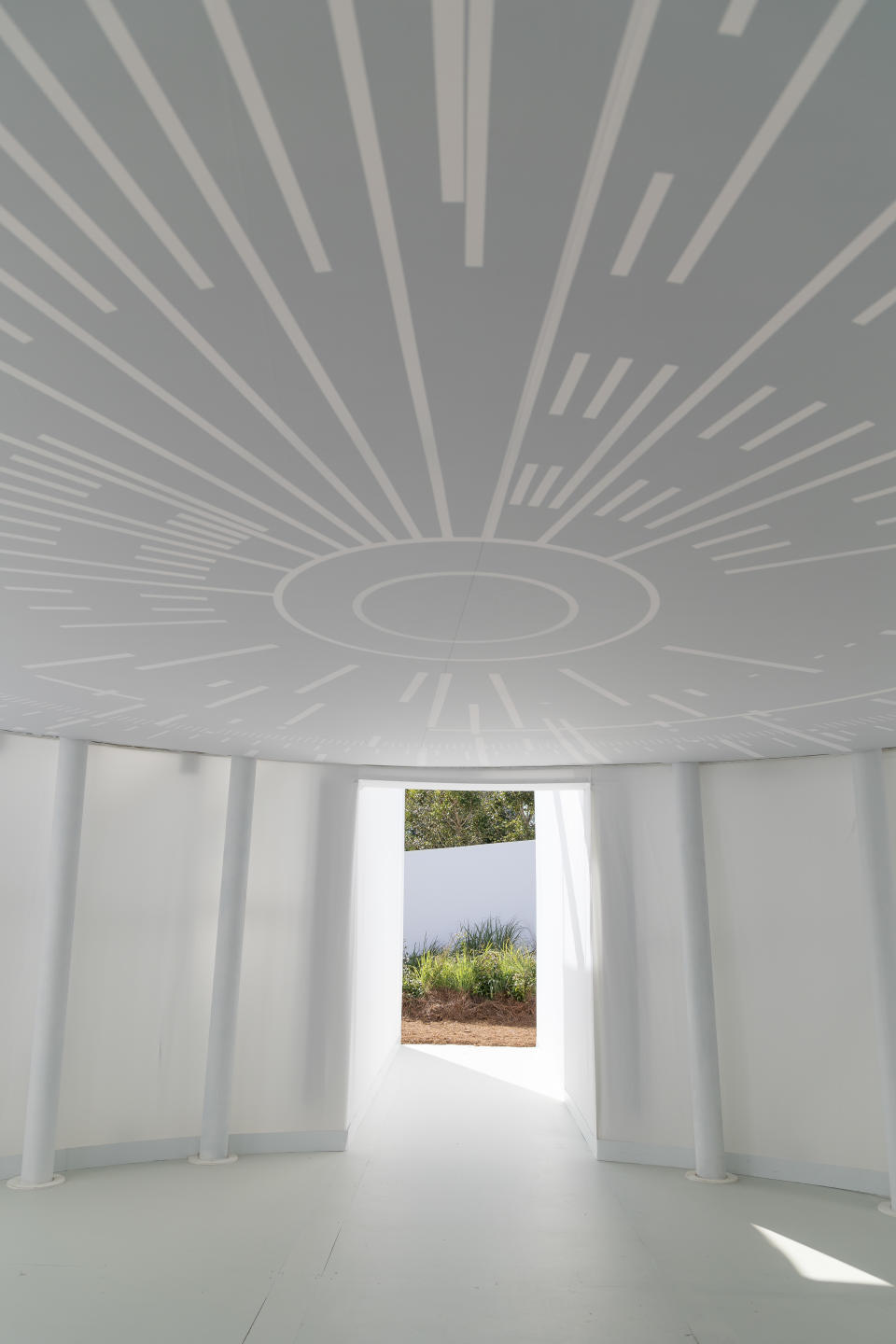Chanel, Es Devlin Take No.5’s Centennial to Miami Art Week

After a slew of celebrations for Chanel No.5’s 100th birthday, a new installation looks back at the brand’s heritage – and ahead to nature’s future.
Starting Tuesday, the brand’s Es Devlin-designed installation, “Five Echoes” — which combines themes of sustainability with motifs of Gabrielle Chanel’s own life — will be open to the public through Dec. 21. Admission is free, with online, timed ticketing available now.
More from WWD
The overlap between Art Basel Miami Beach and Miami Art Week presents a busy week for Chanel. The brand is opening a new 7,600-square-foot store in Miami’s Design District, and will also stage a light show via drone technology over Miami’s Faena beach on Dec. 1.
The festivities around No.5, though, have spanned 2021 and have taken different forms on different continents. Chanel has commemorated the fragrance’s centennial with a new high jewelry collection, a limited-edition product range, and a party in New York’s Rockefeller Plaza.
Olivier Polge, Chanel’s in-house perfumer creator, said that while it is the house’s undisputed most famed scent, it’s also the basis for all of the brand’s subsequent fragrances.

Genesis Bonilla/WWD
“No.5 is the center of our identity in terms of perfumes, and today, we create perfumes at Chanel because of No.5,” Polge told WWD. “In the time of Gabrielle Chanel, you had fashion on one side and perfume on the other side, and they were not connected. Chanel was the first fashion designer who had such an intuition: that these two different fields are strongly connected, and somehow, that perfume is an expression of style. Most of our identity can be explained through No.5.”
Polge first joined forces with Devlin in 2016, when Chanel first commissioned the stage designer to create “Mirror Maze” for a five-day installation in London. “Being drawn back to an engagement of life through one’s senses is the main thing I learned from Olivier [Polge],” Devlin said. “He is someone who deals in the now, and the experiences of now through senses and emotions.”
“She has a very true vision of No.5, I come with more a perfumer’s view on No.5 and the very important link with nature and the construction of perfumes,” Polge said of Devlin. “She really came up with this installation, but it’s true that in my universe, we work a lot with the interaction between our senses. I make a lot of parallels between perfumes and music. Both are not visual, so I think that more than many other senses, those are the most intuitive.”

Genesis Bonilla/WWD
Taking the scent to the dimensions of an installation took Devlin extensive research, both on the life of Chanel’s founder and the larger cultural attitudes at play, both then and now.
“I’m fascinated in that honesty of reflecting modernity, the postwar conditions of what the human condition really was in 1921 that led her to create No.5, as opposed to the others which had nothing like this quantity of aldehydes in them,” Devlin said. “Where the real lines that I’ve been following for 20-odd years overlap with this particular house is how Gabrielle Chanel interfaced with nature.”
Devlin’s installation started with a temporary forest of 2,000 trees in Jungle Plaza, an outdoor event space in Miami’s Design District. At the center of the foliage is a labyrinth consisting of five concentric paths. It includes a soundscape inspired by two different means of perfumery: the human sense of smell, and gas chromatography.
The landscape’s blueprint was also informed by Chanel’s upbringing at the abbey of Aubazine in southeastern France.

Genesis Bonilla/WWD
“[Chanel] was living in this convent which, like this labyrinth, had a really governed series of paths defined by concentric circles,” Devlin said. “When you look out the windows that she would have looked at every day, there’s been a lot of speculation that maybe, subliminally, the house’s monogram came from this.”
“It’s a really forested area, too” Devlin added. “That convent was actually built as a place for meditation for monks. It was a place where humans and nature coalesced, for humans to sit and meditate and connect with nature. That’s why it was originally built.”
References for the installation spanned from the work of Charles Baudelaire to postwar modernism, but Devlin drew inspiration from another type of lore for the labyrinth itself.
“I went back to the roots, and the labyrinth in this work is not really my own,” she said. “The way I’ve presented it is an interpretation, but it arrived very clearly from the original Cretan labyrinth,” referring to the creation in Greek mythology. Further, Devlin noted the origins of the word, which actually was the name for a dance intended to connect participants further with nature.

Genesis Bonilla/WWD
Visually speaking, “it’s this counterpoint between very organic forms in the forest, and the human design of the architecture,” she explained.
Devlin postulated that No.5’s inception started with society’s changing relationship with the earth in the wake of World War I, and her hypothesis became the jumping-off point when conceptualizing “Five Echoes.”
“This relates to my research: what made a woman Coco Chanel in 1921? What was it that made her create, or drawn to create?” she asked. “The interpretation of it as a scent was so distinct, at the time when scents available for women were pure jasmine or pure gardenia, pure rose or pure geranium. I think she recognized that this wasn’t really appropriate in a post-war, rectilinear, Le Corbusier context. Smelling like a rose was not honest in the same way.”
Devlin was able to address themes of nature in more contemporary ways as well. Sustainability is integral to the constructions of her past works — she unveiled the Conference of the Trees, an installation of 197 trees at the COP 26 U.N. Climate Change Conference in Glasgow, Scotland, last month — and minimizing impact on the earth has become one of her greatest considerations when ideating new projects.
“I’ve talked a lot about how my pieces remain in the memories of those who saw them. But what good is that if they also scar the land by remaining in landfills,” Devlin mused. “Our consciousness is growing daily with how we make an ephemeral piece without contributing to a landfill.”
To that end, the installation’s thousands of plants will be reforested in partnership with Million Trees Miami, a campaign that aims to plant 1 million trees in the county. The labyrinth, which is made of timber and fabric, will be recycled. “The real aim now in these works is to leave no trace, or at least only positive traces,” Devlin added. The donation is also in line with Chanel’s larger sustainability commitments.
Central to the work’s contemporary messages, though, is putting the foliage at the focal point of the exhibition, and not just to keep as a backdrop. “The important thing for us to recognize is that we’re not the only protagonists, we’re not the only lead actors on the stage. The co-authors of this work and the protagonists of this work are the thousands of plants,” Devlin said. “With the human architecture that surrounds them, it really draws our eye to recognize and pay attention to the trees. Each of these trees is labeled, so people could come away, having felt the benefit of standing amongst the trees and having learned their names, that would be wonderful.
“Equally, if people had just reflected on something as iconic and a part of people’s lives as No.5, as an expression of the changing relationship between humans and nature, I think that’s why No.5 is so memorable,” Devlin continued. “That’s why we’re drawn to it, because it was honest, and we’re really drawn to works of art that are honest.”
For more from WWD.com, see:
Chanel Partners With Kristen Stewart Film ‘Spencer’
Es Devlin Will Unveil ‘Five Echoes’ Commission in Miami in Honor of Chanel No.5
Sign up for WWD's Newsletter. For the latest news, follow us on Twitter, Facebook, and Instagram.